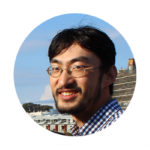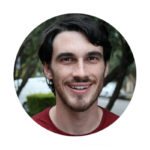Press Release April 2020
Record Number of Early Career Fellowships to improve Cancer Radiation Therapy with MRI.
A trio of early career research fellows from the ACRF Image X Institute at the University of Sydney will begin cutting-edge research missions to improve cancer radiation therapy this year, thanks to support from Cancer Institute NSW and the NHMRC. Dr Brendan Whelan, Dr David Waddington and Dr Paul Liu will each be tackling unique challenges associated with the Australian MRI Linac, a powerful experimental cancer radiation therapy system based at Liverpool Hospital.
“To have three early career fellowships commence this year is absolutely tremendous. Support for Brendan, David & Paul will super-charge our capacity for scientific discovery over the coming years. These awards reflect the outstanding qualities of our early career researchers and reinforce the significance of our research”, says Professor Paul Keall, a lead investigator at the Australian MRI-Linac Program.
Accuracy of the delivery of the radiation has steadily improved over the past few decades. Nowadays, the radiation beam can match the shape of the tumour. Dr Brendan Whelan’s work will be focused on shaping the radiation beam using methods more compatible with MRI Scanners. “The beam shaping methods in use today were never intended to work with MRI scanners, making system integration a challenge. Current methods may also struggle to adapt fast enough to what we see using MRI. The novel beam shaping approach I will investigate has the potential to address both these issues.” Dr Whelan’s work is supported by the National Health and Medical Research Council.
Dr David Waddington (supported by Cancer Institute NSW) will explore artificial intelligence as a means to track tumour movements in real-time with MRI during radiotherapy treatments. “Most people know that machine learning could soon see self-driving cars on our roads. My project aims to apply improvements in machine learning to cancer therapy on the MRI-Linac, so that we can steer the radiation beam and hit tumours with unprecedented accuracy.”
Dr Paul Liu (supported by Cancer Institute NSW) will be developing techniques for radiation therapy treatment to be delivered while the patient is sitting upright, rather than lying down. ““Treating patients upright can not only be more comfortable, but also lead to better treatment outcomes. Upright treatments, however, are not common due to a lack of upright imaging technologies. The Australian MRI-Linac is unique in that it can image patients in multiple orientations including lying down and standing up. My project will leverage this ability to create new imaging algorithms that will enable upright treatments to be delivered just as accurately as if the patient was lying horizontally.”
“Despite the uncertain times we now find ourselves navigating, we can unfortunately be certain that cancer rates are rising. Radiation therapy is a common cancer treatment, needed by half of all cancer patients. Therefore Brendan, David and Paul’s work has the potential to help millions of cancer patients” says Professor Keall.



# # #
For interviews, enquiries and more information, please contact
Julia Johnson – Design & Communications Officer, ACRF Image X Institute
+61 408 385 715 | julia.johnson@sydney.edu.au | http://sydney.edu.au/medicine/image-x

